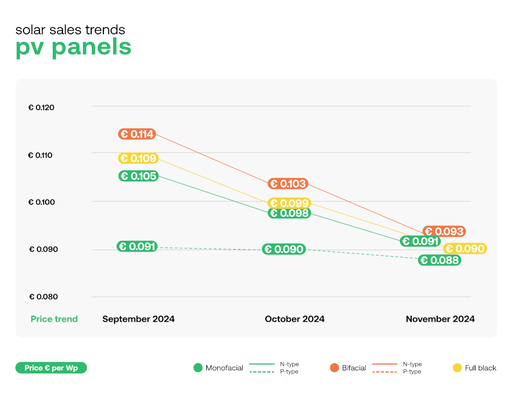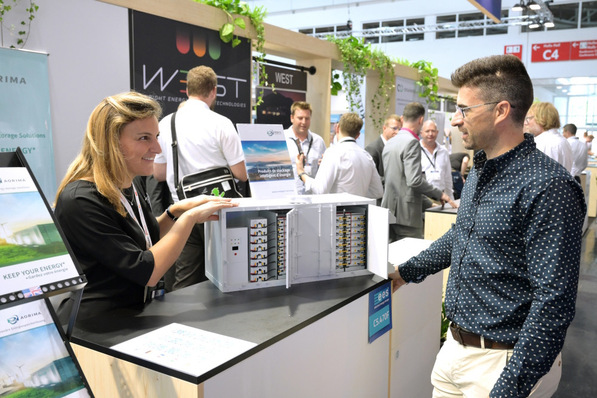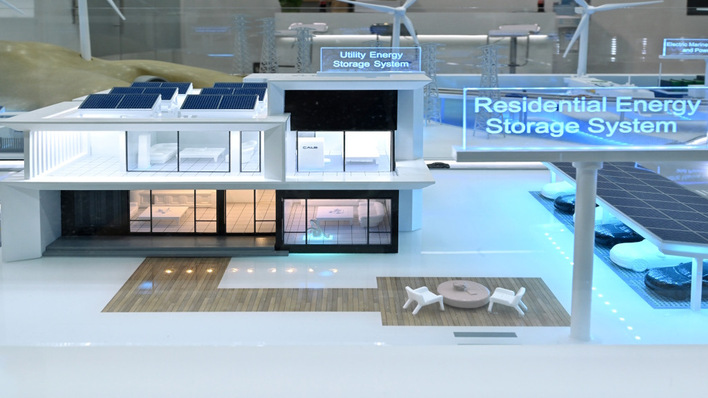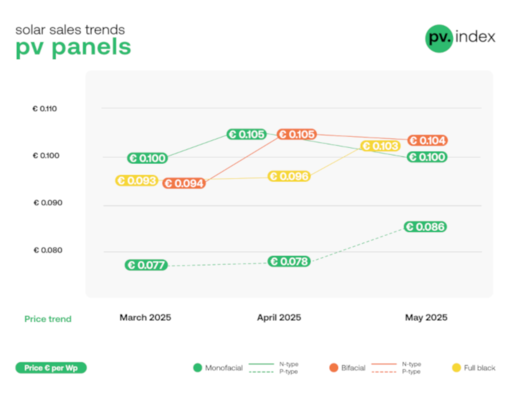There’s no hiding it – I’m a huge fan of commercial and industrial (C&I) solar and storage. With utility-scale renewables increasingly facing public opposition and regulatory hurdles, behind-the-meter solar and storage represent a major opportunity. Beyond reducing energy costs for European businesses, it can enhance overall grid efficiency as renewables continue to scale. Yet despite the promise, C&I energy storage can be a tough nut to crack.
Still, it’s encouraging to see the European C&I solar installs delivering steady growth. According to SolarPower Europe’s Global Market Outlook for Solar Power 2025–2029, while EU residential solar installations fell by 5 GW in 2024 to 12.5 GW, more than 24 GW were installed on C&I rooftops. Residential market share declined from 28% to 19%, while the C&I share edged up by 1% to 37%.
New EU platform urges tenfold battery storage growth
This is a clear sign of the strength of the C&I value proposition. However, rising solar penetration across Europe is driving significant daytime price cannibalisation. BloombergNEF data shows a sharp increase in zero or negative electricity price events across the continent.
From 2023 to 2024, the generation hours when prices were zero or below rose from 324 to 521 in Germany (+60%), from 372 to 549 in the Netherlands (+47.5%), and from 108 to an astonishing 784 in Spain (+626%). In short, solar is becoming a victim of its own success, and the effects are rapidly eroding the economics of new PV projects.
The missing link in Europe’s solar surge
On the flip side, the increasing frequency of low-price events presents an opportunity for battery energy storage. Alongside sagging daytime prices come staggering price peaks – typically in the evening, when demand remains high as solar production drops. This volatility presents a prime use case for energy arbitrage: charging batteries with rooftop PV or cheap grid electricity during the day or overnight, then discharging when prices spike.
The market response to these price signals has been dramatic. According to SolarPower Europe’s European Market Outlook for Battery Storage 2025–2029, Europe’s installed battery fleet has grown by nearly 60% annually over the past four years, reaching 61.1 GWh of capacity.
Expert analysis: Why flexibility is key for a future-proof energy system
Most of this growth has come from residential and utility-scale systems, which accounted for 57% and 33% of new battery installations in 2024, respectively. The uptake of C&I batteries, by contrast, continues to lag. In Germany, the continent’s largest battery market, with 6.2 GWh installed in 2024, C&I battery attachment rates remain below 20%. Given the country’s installed C&I solar capacity of around 61 GW, the potential for battery integration is massive and still largely untapped.
Despite the growing opportunity, complexity and nascency are proving to be major impediments to C&I battery uptake. Batteries are like a Swiss Army knife, capable of performing multiple tasks. The key to their application is knowing what combinations of options you need for a given situation. This varies depending on the customer’s needs, their specific energy consumption and billing patterns, and their location, which often reflects local regulations, electricity markets, and network tariff structures.
Tariff design: The overlooked driver of C&I viability
Although electricity markets have evolved rapidly in recent years, many commercial tariff structures remain outdated and reflect an electricity system characterised by large centralised generation. Fixed-price or bundled tariffs are still common, failing to reflect the real cost of electricity supply or to provide clear price signals that encourage flexibility around times of low and high renewable generation or demand. As a result, these outdated pricing models can significantly, and negatively, affect the economics of C&I solar and battery projects.
To explore this impact, Orkestra conducted a detailed analysis of solar and storage feasibility across 14 utility regions in the UK, modeling both a typical SME and a larger industrial customer. Using representative half-hourly electricity consumption profiles, we tested a range of system sizes and operational strategies to identify the “sweet spot” between battery operation, customer load profile, and behind-the-meter system sizing.
The results were counterintuitive at times, with the local utility region having a greater influence on system feasibility than solar irradiation – clearly underscoring the importance of tariff structures.

Orkestra
Going deeper into the analysis, take the example of a small to medium-sized enterprise in Liverpool, in the northeast of England. A 60 kW solar array paired with a 40 kWh battery yielded a Net Present Value (NPV) of £62,000 when the battery was used purely for self-consumption. However, switching to a three-rate time-of-use tariff increased the NPV to £109,000. When the battery was further optimized to charge from both rooftop solar and low overnight grid prices, discharging during high-price morning and evening periods, the NPV jumped again, reaching £123,000.
Stay informed – subscribe to our free newsletters
The rollout of dynamic electricity tariffs across Europe, and notably in Germany in 2025, is a welcome and necessary step. Furthermore, network tariffs such as Germany’s Atypical Network Usage demand tariffs create incentives for curtailing electricity use during periods of peak grid demand. As Orkestra’s analysis shows, this development opens up substantial opportunities for European businesses to reduce energy costs.
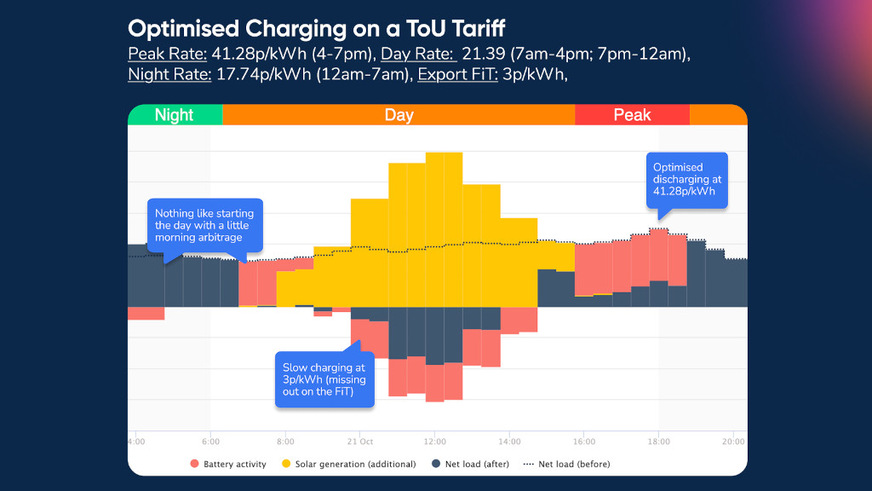
Orkestra
For solar companies, it paves the way to deliver more valuable solar-plus-storage solutions and retrofit batteries to existing C&I installations. Unlocking this potential depends not only on deploying new technology, but also a clear understanding of the battery value stack and the role dynamic tariffs play in reshaping project economics. Those who fully understand this bigger picture will be best positioned to lead in this next phase of Europe’s energy transition.
For policymakers, it is crucial to continue encouraging suppliers and network operators to provide clear price signals to business consumers. These signals incentivize businesses to shift their energy use away from peak demand periods and toward times that better align with renewable energy generation.
Weak PPAs need more storage and co-location
For example, UK policymakers should unwind regulatory changes that result in a substantial portion of network fees being fixed in “Residual Charges.” This network fee structure erodes the price signal for business consumers to reduce demand via measures such as installing batteries. Given the highly constrained national grid in the UK, it is perverse that Residual Charges are constraining a major lever to deliver much-needed flexibility. (James Allston/hcn)
About the author: James Allston co-founded clean energy feasibility modeling software provider Orkestra Energy in 2020. A passionate advocate for transforming how businesses use energy, James was also Vice President and a founding member of the Australian Energy Efficiency Council. He is currently leading Orkestra’s expansion into Europe, with a focus on the United Kingdom and Germany.
Explore the full analysis here




